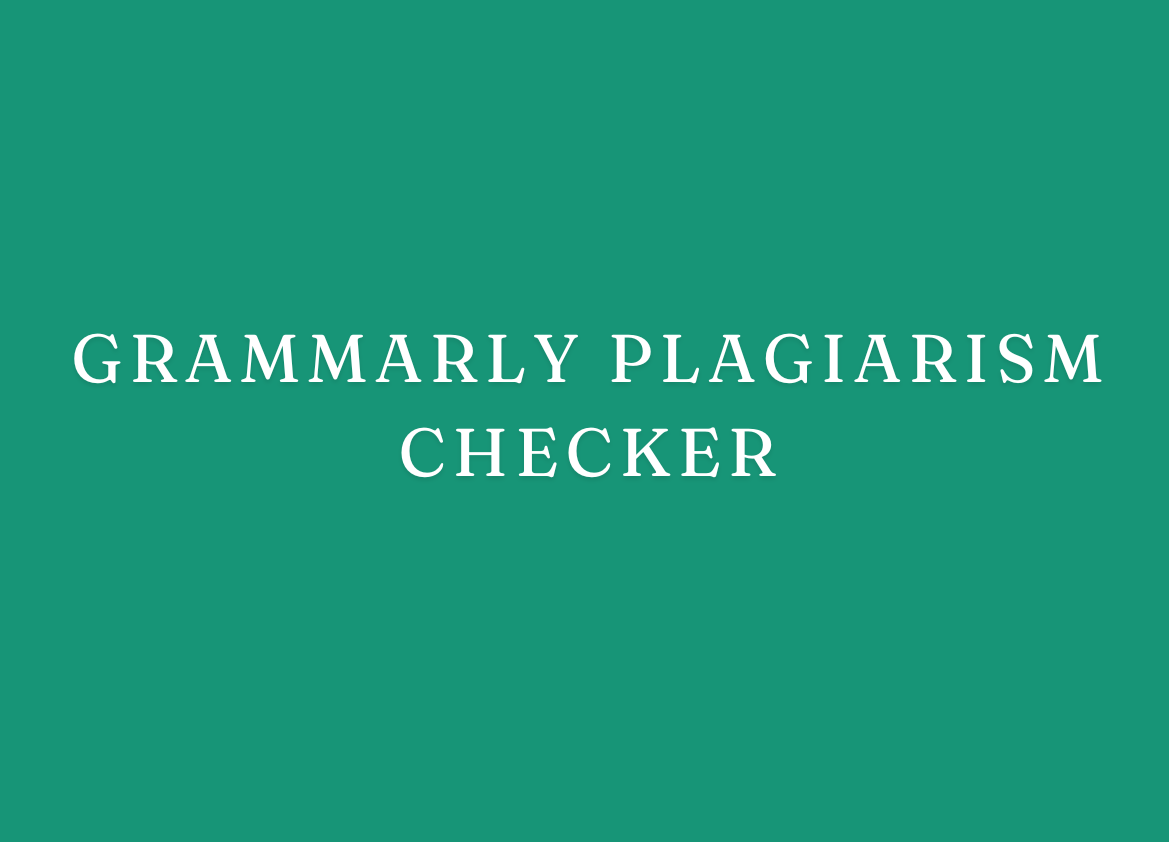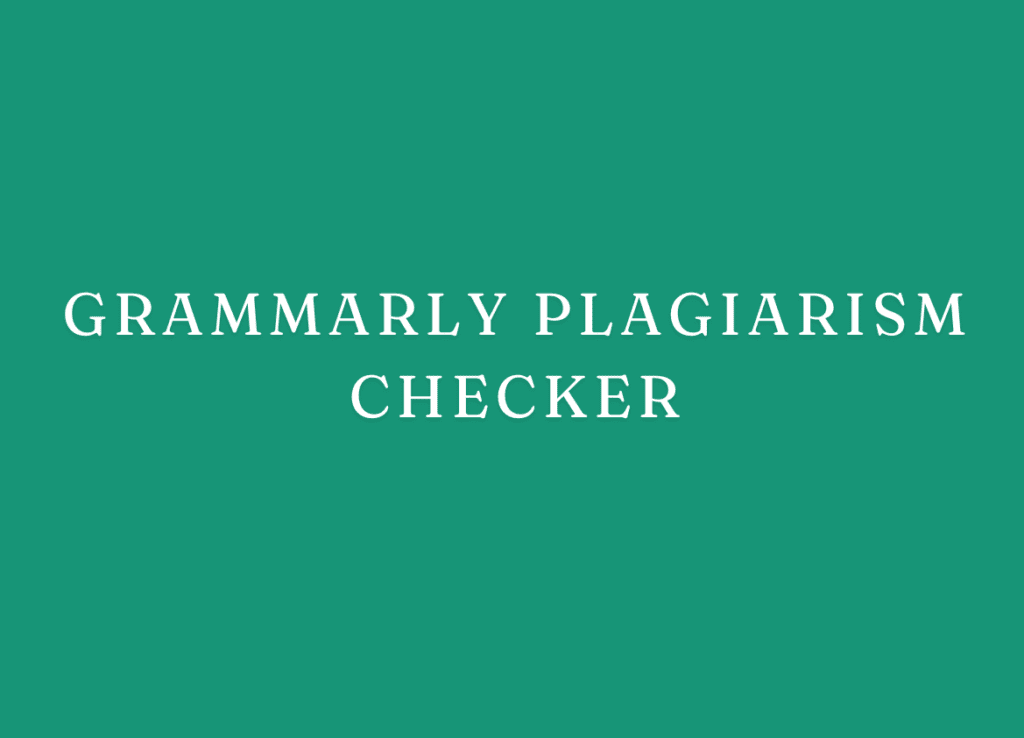
Grammarly Plagiarism Checker Best Guide
In current academic and professional writing, plagiarism stands very significant and can cause
many problems like loss of name and legal actions. Grammarly introduces a strong method for
people not to fall into such errors.

Grammarly Plagiarism Checker which is a feature that found in the Grammarly suite. This feature is advanced and scans your content with
billions of web pages as well as academic papers to confirm whether it is original or has not
been duplicated unconsciously.
How Does Grammarly Plagiarism Checker Work?
The method used by Grammarly’s plagiarism check tool is to check your text with a large
number of other texts to determine whether it contains any similarities. The tool also examines
written work for originality by looking at paraphrases and similar meanings not just identical
sentences.
As soon as you upload, the system starts running through Internet pages, academic
libraries as well previously submitted papers among others in search of any match that may
exist. When it finds one, all matching parts will be highlighted with tips provided on how they can
be rephrased or cited correctly if necessary. This innovation helps make sure that what you
write is yours alone while giving credit where it is due.
Is Grammarly Plagiarism Checker Accurate?
Grammarly can detect plagiarism accurately. It is praised by both consumers and professionals
for its power to sift through big data sets and establish matches. The company updates its
technology constantly to give reliable results that help people prevent major issues relating to
copied materials.
Step-by-Step Guide on How to Use Grammarly Plagiarism
Checker
Access Grammarly Plagiarism Checker
Firstly, signup for a Grammarly account you can sign up with your google account after signup then sign into your Grammarly account then choose the plagiarism checker tool in the
dashboard. This function is offered to all users for free including those who use premium but
they will get advanced abilities.
Upload or Paste Your Text
You can either upload a document or paste text directly into the checker. Grammarly accepts
multiple file formats, including Microsoft Word and PDF, making it versatile for different user
needs.
Results Interpretation
Once your text is submitted, Grammarly scans and presents a report detailing the percentage of
your text that matches other sources. It also highlights specific lines and paragraphs, providing
direct links to the sources of potential plagiarism. This feature enables you to review and edit
any flagged content.
How the Grammarly Plagiarism Checker’s Algorithm Works
An incredibly intelligent algorithm is employed by the Grammarly Plagiarism Checker for
detecting likeness and potential plagiarism in written stuff. Fundamentally, this algorithm makes
use of advanced search techniques as well as data retrieval processes to compare the
submitted text with a massive database containing academic papers, books, and billions of web
pages.
This involves both current and saved data to ensure full coverage. Here, the system
checks for exact matches and paraphrased content while pointing out any phrases or
paragraphs that may have been copied from elsewhere. It does this by not only identifying
verbatim copies but also closely restated similarities which can easily escape manual detection.
Additionally, Grammarly algorithm incorporates natural language processing (NLP)
technologies that understand the context and meaning of words within the text. This allows for a
nuanced detection of plagiarism, distinguishing between commonly used phrases and genuinely
plagiaristic content.
The system also evaluates the structure and syntax to pinpoint unusual
similarities that might indicate plagiarism. As a result, users receive a detailed report specifying
the percentage of their text that matches other sources, complete with direct links to the
potentially plagiarized content. Writers can depend on Grammarly to preserve their work
authenticity and trustworthiness since this exhaustive and clever scrutiny is done.
How to Get the Most Out of the Grammarly Plagiarism
Checker
Check for Plagiarism as Your Final Step
It is advisable to use a plagiarism checker after writing and revising your paper. This ensures
that all changes are considered before the final evaluation for originality.
Use it to Check for Accidental Plagiarism
Even the most diligent writers can unintentionally replicate common phrases or specialized
information. Regular checks can prevent these mishaps from becoming bigger issues.
Make Your Sources More Diverse
To ensure the richness of your work and minimize plagiarism risks, try to draw information from
a broad range of sources. This practice enhances your writing depth and originality.
Use the Premium Version
For more detailed insights and a broader range of checks, consider upgrading to Grammarly
premium version. This investment is particularly beneficial for academic writers, researchers,
and professionals.
Common Issues and Troubleshooting
Rehumanize While using the Grammarly Plagiarism Checker, users may often run into some
common challenges. These include sluggish response times and unexpected errors in the
plagiarism report. Most times, the root cause of these issues is high server loads or huge
document sizes surpassing the tool’s capabilities.
Moreover, internet connectivity complications
may disturb the proper functioning of the plagiarism check. To fix such problems, ensure that
you have a stable internet connection, reduce the size of your document if it’s too large for the
tool’s limit, and try running the check during off-peak hours.
Another problem that occurs frequently among others is when there is an inconsistency in the
report produced by the plagiarism checker indicating that it was not able to determine how much
of the content is original. This may be because databases are dynamic and these checks are
made against them
Final Words
Its important to use a program that detects plagiarism, such as Grammarly. Doing so will
maintain your written materials honesty. It doesn’t only endorse your trustworthiness but also
promotes honesty and hard work in writing. Keep in mind that everyone benefits from ethical
writing practices. This includes writers, readers, as well as the wider educational and
professional communities at large.
FAQs
What is the Grammarly Plagiarism Checker?
To guarantee your substance is unique; the Grammar Plagiarism Checker in the Grammar
application experiences billions of pages and course diaries. This is meant to help you avoid
plagiarism by detecting similarities while providing potential matches with source links
How accurate is the Grammarly Plagiarism Checker?
Many people consider Grammarly as having accurate plagiarism detection even though there is
no such thing as 100% certainty with any tool. It is always being updated and this is done to
make sure that it can locate precise or near matches more easily which therefore provides a
reliable way of confirming if something has been copied
Can I use Grammarly Plagiarism Checker for free?
Yes, Grammar offers its plagiarism checker in the original version for those who do not pay for
the service But even while this is there, it has been indicated that the paid or premium package
will offer deeper scrutiny that would be good enough especially when one wants more details on
originality as well as additional assistance in writing.
What should I do if Grammarly flags a part of my text as plagiarized?
In case segments of your text are highlighted by Grammarly, look through these parts and
analyze them beside the source links that are provided. Should you find out that the flagged
content matches the source directly or nearly does minus proper citation, you must review it to
make sure that it is original and then properly cite any direct quotes or paraphrased material.
Is the Grammarly Plagiarism Checker useful for academic writing?
Certainly. The Grammarly Plagiarism Checker is particularly useful for students, teachers, and
scholars. This ensures that none of their work contains accidental plagiarism while meeting
ethical writing standards that are essential to the maintenance of academic integrity.








